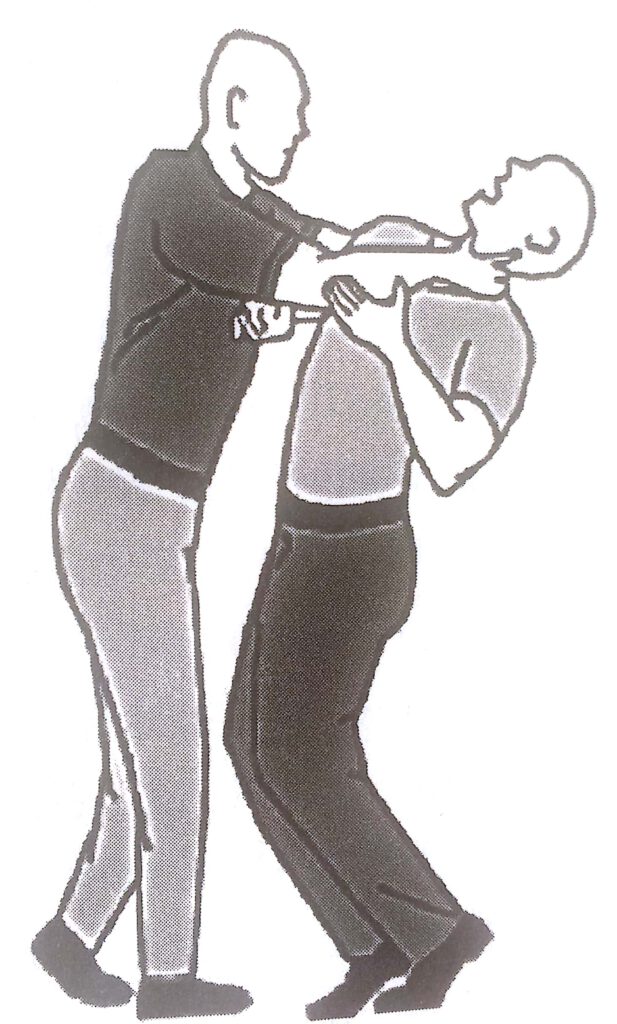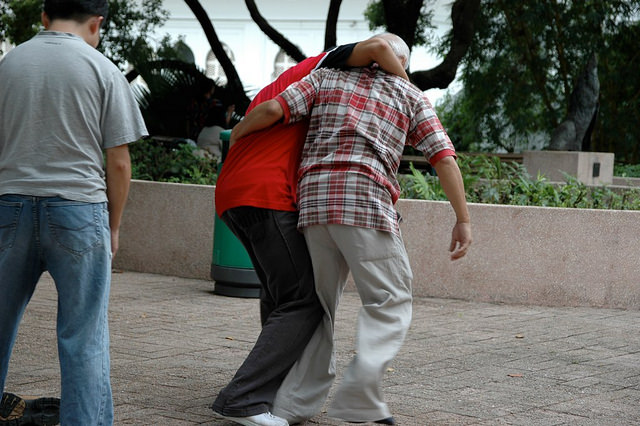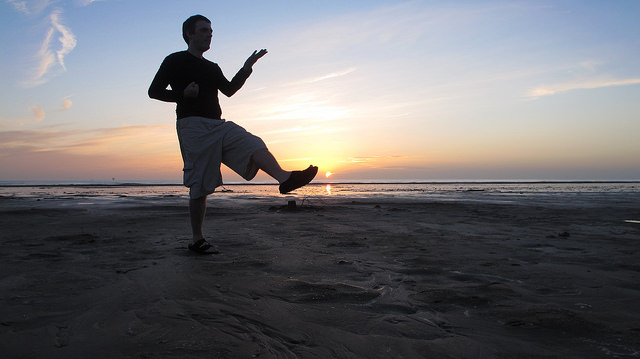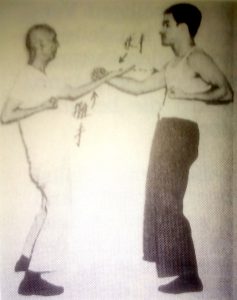Look at the following picture.
What would you do in that situation?

This picture is taken from the book „When violence is the answer“ by Tim Larkin.
Whatever your answer to the question was – when you identified with the person on the right rather than the person on the left, you have a problem.
Because you empathize and identify with the victim.
See, the question was not „How would you act if you were choked?“. It was „What would you do in that situation?“.
If you put that picture in front of a violent offender, a real predator, they will always identify with the person on the left.
It does not even cross their mind to be the victim.
And this is where all wing chung styles have it fundamentally wrong.
They teach first how to defend yourself.
And only later will you learn – at least that’s what they claim – to attack.
Namely, when you learn the third form – Biu Tze.
And that’s – sorry if I have to say it that bluntly – total baloney.
The first thing you should ever learn in wing chun is how to be the perpetrator and how to act with intent to – as Tim Larkin likes to put it – cause trauma to the human body.
Or in other words: how to use the tool of violence.
How to give in to pressure or circumventing an obstacle to get where you want to go, as you learn it in Chi Sao, is, at the end of the day, a sort of optimization.
For example, when you’re trying to hit the throat with your forearm using your whole body weight and your victim tries to block – then your Chi Sao may help to quickly adapt to that new situation.
But the first thing you should ever learn is how to get there in the first place, and not worry about the unlikely event that you can’t.
So what is it that the wing chung styles do wrong?
They teach you how to be defensive instead of how to attack and cause serious harm.
That’s why the most artful martial artist will lose against a totally untrained, maybe even pot-bellied attacker: it’s simply because some people tackle such a situation with the necessary intent. Meaning to cause serious harm – even death.
That’s what you don’t learn in your wing chung class.
In my opinion, that should be the first thing you learn. Then you can start to be more artful and train Chi Sao – wooden dummy and all.
Not the other way around.


